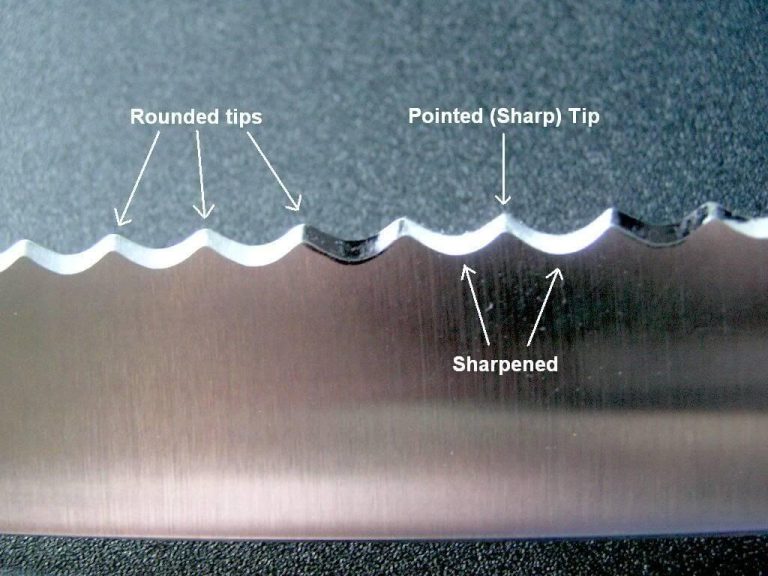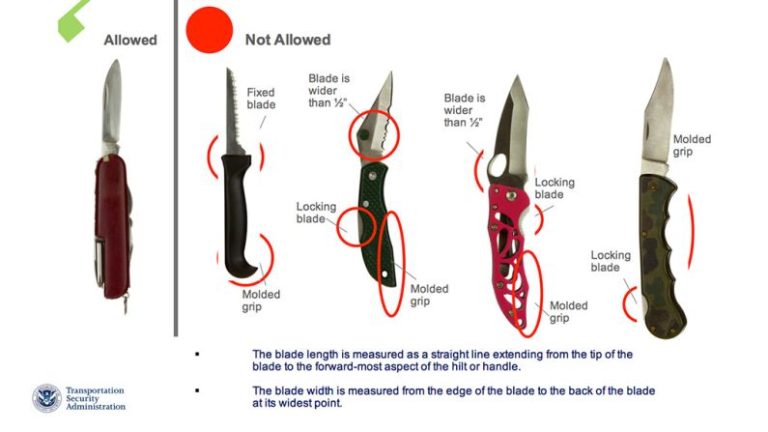What Size Knife is Legal to Carry in California? Guide
What size knife is legal to carry in California? Switchblades with blades of 2 inches or longer are illegal to carry in California. Non‑locking folding knives of any blade length may legally be carried, concealed or open. Fixed‑blade knives (dirks/daggers) of any size must be carried openly, not concealed.
Whether you’re an outdoor enthusiast, a chef on the go, or just someone who likes to be prepared, understanding the laws can keep you out of trouble. We’ll break down everything you need to know about knife sizes, types, and what you can legally carry in California.
You’ll discover surprising facts that could impact your daily life and help you avoid unexpected fines or legal issues. Ready to dive in and ensure you’re always on the right side of the law? Let’s get started!

Credit: tkellknives.com
What Size Knife is Legal to Carry in California?
Knife Laws In California
Understanding knife laws in California can be crucial for anyone who carries a knife for work or outdoor activities. Whether you’re an avid hiker or a chef on the move, knowing the legal boundaries can save you from unnecessary trouble. California’s knife laws are known for being quite specific, and keeping up with these regulations can be vital for your peace of mind.
Understanding Legal Knife Sizes
California law does not specify an exact blade length that is universally illegal to carry. However, context matters significantly. For instance, a pocket knife with a blade less than two inches is typically considered safe to carry.
Switchblades are illegal if their blades exceed two inches. Carrying them can lead to serious penalties. It’s crucial to ensure your knife complies with these specifics to avoid legal issues.
Fixed Blades And Folding Knives
Fixed-blade knives often require open carry. This means they should be visible and not concealed. Folding knives, on the other hand, have more lenient rules. You can legally carry them concealed, provided they are in a folded position.
Think about where you plan to carry your knife. Are you heading to a campsite or just commuting? The context can change the legality of your knife’s size and type.
Exceptions To The Rule
While most knives follow the general regulations, certain places have their own rules. Airports and schools, for example, have strict no-knife policies regardless of size. Always check specific area guidelines before you plan to visit.
Have you ever been in a situation where you didn’t know if your knife was legal? It’s a common concern that can be avoided with a little research. Ensuring you understand local laws can prevent awkward or dangerous situations.
Practical Insights
Consider carrying a measuring tape to ensure your knife stays within legal limits. This simple tool can be invaluable in ensuring compliance. Also, keeping a copy of local regulations handy can be useful if you’re ever questioned.
How often do you check the legality of the items you carry? It’s something worth pondering to ensure you’re always on the right side of the law. Your awareness can make a significant difference in safety and legality.

Credit: www.reddit.com
Types Of Legal Knives
California law permits knives with blades up to 2 inches for concealed carry. Larger knives must be carried openly. Switchblades are illegal if the blade exceeds 2 inches. Always check local laws for specifics to ensure compliance and avoid legal issues.
When considering what size knife is legal to carry in California, it’s crucial to understand the different types of knives and their specific regulations. Knowing the legal distinctions can help you navigate the law and ensure you’re carrying a knife within legal parameters. Let’s explore the types of legal knives you can carry in California, so you can make informed decisions.
Folding Knives
Folding knives are a popular choice for many due to their convenience and versatility. In California, these knives are generally legal to carry, regardless of blade length, as long as they are in the folded position. Imagine needing a knife for a camping trip; having a folding knife in your pocket can be handy and legal. But remember, using it responsibly is key.
Fixed-blade Knives
Fixed-blade knives, unlike folding ones, are more rigid and cannot be folded. California law permits carrying fixed-blade knives openly on your person. If you’re a chef who loves to travel with your knives, you must carry them openly in a sheath. Concealing a fixed-blade knife could lead to legal issues, so visibility is crucial.
Switchblades
Switchblades are often surrounded by misconceptions. In California, it’s illegal to carry a switchblade with a blade longer than 2 inches. Picture yourself at a flea market, tempted to buy a flashy switchblade—ensure it’s within the legal size to avoid trouble. Remember, the law is strict about these knives to ensure public safety.
Butterfly Knives
Butterfly knives, also known as balisongs, have a unique allure. However, they fall under similar regulations as switchblades. California law restricts them to a blade length of under 2 inches. If you recall handling one out of curiosity, it’s essential to check its size to stay legal. Safety and compliance go hand-in-hand with these intriguing knives.
Utility Knives
Utility knives are everyday tools, often used in work settings. These knives are generally legal to carry, given their practical use. Think about using one for a home improvement project; as long as it’s not used as a weapon, you should be in the clear. Always consider the context and your intent when carrying a utility knife. Understanding the types of legal knives in California can help you avoid legal pitfalls. Are there any types you frequently carry or prefer? Knowing the regulations not only keeps you compliant but also ensures your safety and the safety of those around you.
Blade Length Regulations
California law permits carrying knives with blades under two inches. Switchblades are restricted if blades exceed this length. Folding knives, like pocket knives, are generally acceptable. Always check local ordinances as regulations may vary across different areas within the state.
Carrying a knife in California can be a tricky business. The laws around blade length can be confusing, leaving many wondering what’s actually legal. Understanding these regulations is crucial to avoid any legal issues. Are you aware of the specific blade length you can carry legally in California? Here’s the scoop on what you need to know about blade length regulations.
Blade Length Limitations
In California, the law specifies certain limitations on the length of the knife blade you can carry. Generally, pocket knives are acceptable, but they must be folded. If you’re considering carrying a fixed-blade knife, be cautious. These knives fall under stricter regulations, particularly when it comes to concealed carry.
Understanding The Legal Definition
What does California law consider a legal blade length? Typically, pocket knives with blades shorter than two inches are considered safe. Beyond this, carrying a concealed knife with a blade longer than two inches could land you in trouble. This could mean hefty fines or even jail time.
Public Places And Blade Length
Imagine you’re heading to a public event with your favorite knife clipped to your pocket. If the blade exceeds two inches, you might need to reconsider. In many public spaces, knives with blades longer than two inches are prohibited. This includes schools, government buildings, and other public venues.
Exceptions To The Rule
Are there exceptions to these rules? California does make allowances for certain types of knives. For example, kitchen knives and tools used for work purposes often have different regulations. However, carrying them outside their intended use can still be illegal.
Practical Tips For Knife Enthusiasts
If you’re a knife enthusiast, how can you enjoy your hobby while staying on the right side of the law? Stick to carrying knives with blades under two inches when in public. Always check local regulations before attending events or visiting specific locations. Being informed about blade length regulations in California can save you from unexpected legal troubles. Have you ever faced a situation where knowing these laws could have helped you? Understanding these rules is essential for anyone who wants to carry a knife legally in California.
Restricted Locations For Carrying Knives
California law allows carrying knives with blades shorter than 2. 5 inches in restricted areas. Larger knives face strict regulations. Always check local laws to stay compliant.
Carrying knives in California comes with a slew of restrictions, particularly in certain locations where safety regulations are more stringent. Understanding these restrictions is crucial to ensure you don’t inadvertently break the law. Whether you’re a chef, an outdoor enthusiast, or someone who simply carries a knife for daily tasks, knowing where you can and can’t carry your knife is as important as knowing the legal size limits. Planning a visit to a government building or a school? It’s important to know that carrying a knife in these areas is generally prohibited. Imagine the inconvenience of being stopped at a security checkpoint because you forgot to leave your knife behind.
Government Buildings
In California, carrying a knife in government buildings is a no-go. This includes places like courthouses, city halls, and other official establishments. Security measures are typically tight, and even a small pocket knife can land you in hot water. Always double-check before you enter these buildings.
Schools And Educational Institutions
Schools have a zero-tolerance policy when it comes to weapons, including knives. Whether you’re dropping off your kids or attending a community class, leave your knife at home. Violating this rule might not just get you kicked off the premises; it could lead to serious legal consequences.
Airports And Public Transportation
Ever been in a rush and forgotten you had a knife in your bag when entering an airport? It’s a common mistake, but one that can cause significant delays. Airports and public transportation hubs are strict with their security protocols, and knives are not allowed past the security checkpoints. Check your bags carefully before travel.
Events With Security Checks
Attending a concert or sporting event? These venues often have security checks at the entrance. Carrying a knife might mean you’re denied entry or forced to discard it. Think ahead and avoid any disruption to your plans by leaving your knife at home.
Private Property And Businesses
While it might seem obvious, it’s worth mentioning that private property owners have the right to set their own rules regarding knives. Some businesses may prohibit carrying knives on their premises. Respect these rules to avoid any potential conflicts or misunderstandings.
What Happens If You Violate These Restrictions?
Penalties for carrying a knife in restricted locations can vary from fines to more severe legal action. It’s not just about breaking the law—consider the inconvenience and disruption to your day. Is carrying a knife worth the hassle?
Practical Tips
– Know the Rules: Stay informed about knife laws and restrictions in your area. – Plan Ahead: Before visiting restricted locations, check your belongings. – Educate Others: Share this information with friends and family to avoid common pitfalls. Understanding where you can legally carry a knife in California is essential for your safety and peace of mind. Are you familiar with local restrictions in your area, or have you ever faced unexpected consequences for carrying a knife? Your experiences can help others navigate these complex rules.
Penalties For Violating Knife Laws
Understanding the penalties for carrying an illegal knife in California is crucial. Violations can lead to serious legal consequences. Ignorance of the law is not an excuse. Knowing the regulations helps avoid trouble.
Misdemeanor Charges
Carrying an illegal knife may result in a misdemeanor charge. This can lead to fines and jail time. The severity depends on the knife type and situation. Judges consider past offenses and intent. Being informed can prevent these charges.
Felony Charges
In some cases, carrying certain knives can lead to felony charges. Felonies have harsher penalties than misdemeanors. Convictions may result in long-term imprisonment. They also affect future opportunities. Felonies stay on your record permanently.
Fines And Financial Penalties
Financial penalties can be hefty for knife law violations. Fines vary based on the offense. Repeat offenders face higher fines. Legal fees add to financial burdens. Avoiding violations saves money and stress.
Impact On Criminal Record
A knife law violation impacts your criminal record. It affects employment opportunities and background checks. Landlords may deny housing applications. A clean record is essential for many life aspects. Stay informed to protect your future.

Credit: knifeup.com
Frequently Asked Questions
What Is The Legal Knife Size In California?
In California, knives with blades longer than 2 inches are generally regulated. Folding knives are permitted if concealed.
Can I Carry A Concealed Knife In California?
Yes, you can carry a folding knife if it is concealed. Fixed blades must be visible when carried.
Are Switchblades Legal In California?
Switchblades with blades over 2 inches are illegal. Smaller switchblades are allowed for personal use.
Conclusion
Understanding knife laws in California is vital for safety and compliance. Carry knives that fit legal size limits to avoid trouble. Remember, laws can change, so stay informed regularly. A blade under 2. 5 inches is often safe, but always check local rules.
Be cautious and respectful when carrying any knife. It ensures peace of mind and legal protection. Awareness of your rights and responsibilities is crucial. Stay educated. Make smart decisions. Your knowledge helps keep you and others safe.
Related Article







